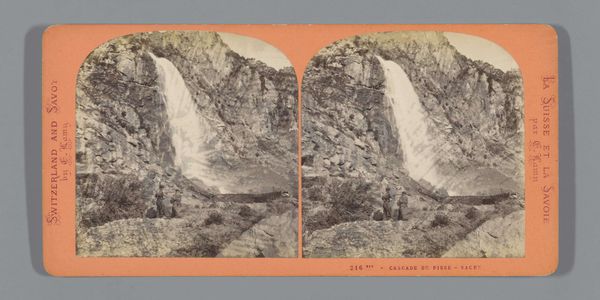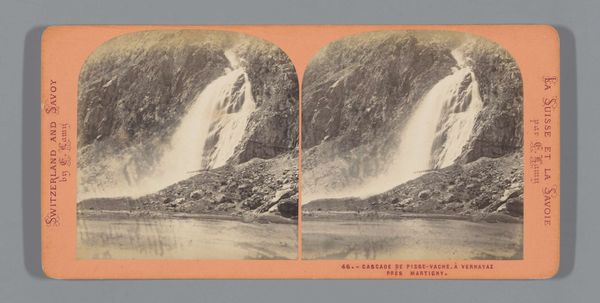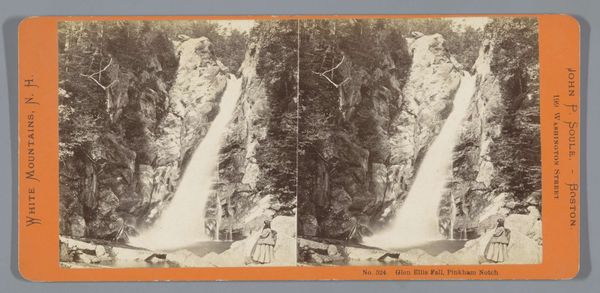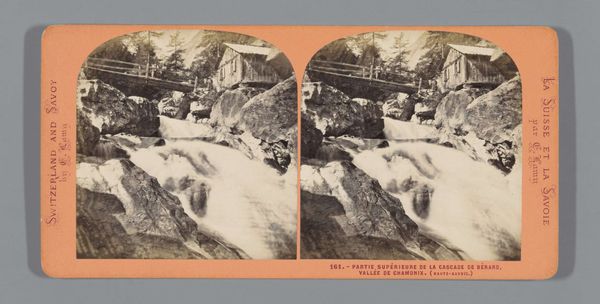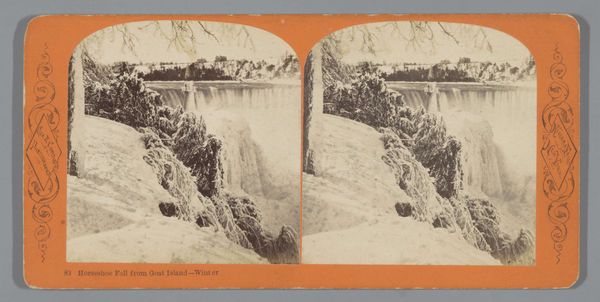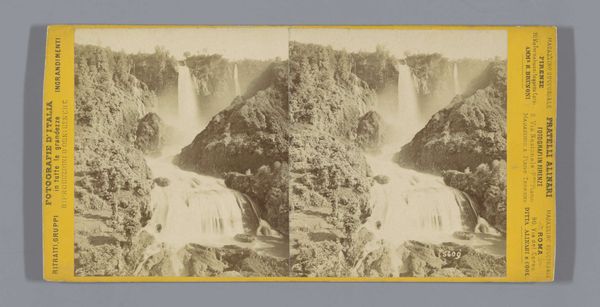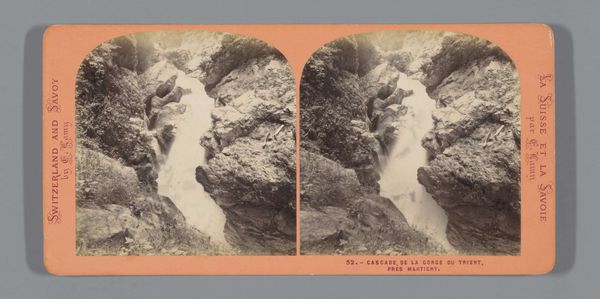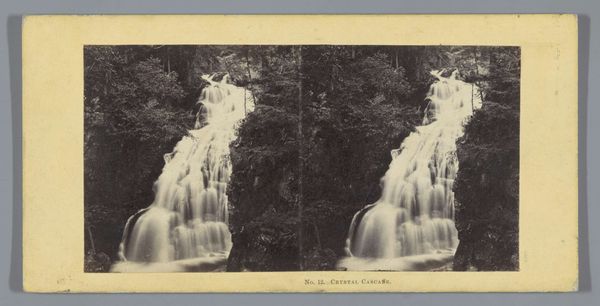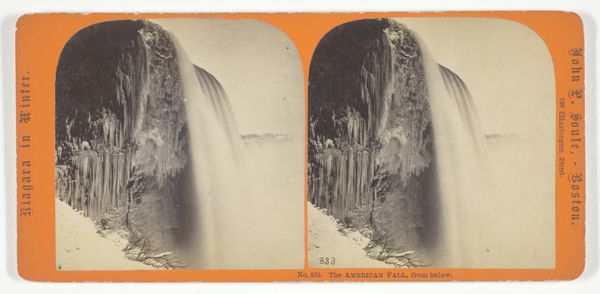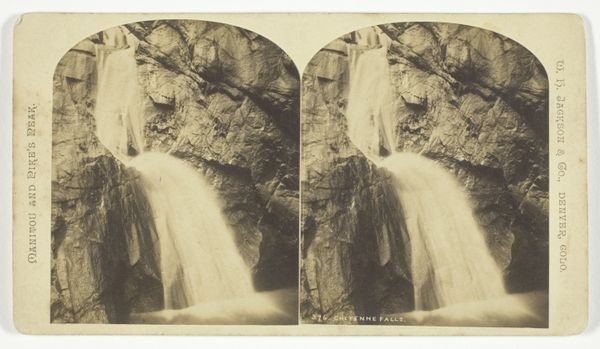
Dimensions: height 85 mm, width 170 mm
Copyright: Rijks Museum: Open Domain
This is Ernest Eléonor Pierre Lamy's stereo card of the Pissevache waterfall. During Lamy’s time, these cards were a popular form of entertainment, offering a glimpse into faraway lands. But they also played a role in shaping perceptions about those places and their people. Consider the act of capturing a landscape like this, and how it reflects a certain power dynamic. Who gets to decide what is beautiful, what is worth documenting? How do these images shape our understanding of nature and our place within it? In the 19th century, as Europe expanded its reach, photographs like these became tools for claiming territory, both physically and ideologically. As you look at this image, think about the stories it tells and the ones it leaves out. Notice the small figures dwarfed by the landscape. How does this contrast contribute to the overall impression? And what does it mean to view this scene through the lens of someone else's experience and perspective?
Comments
No comments
Be the first to comment and join the conversation on the ultimate creative platform.
